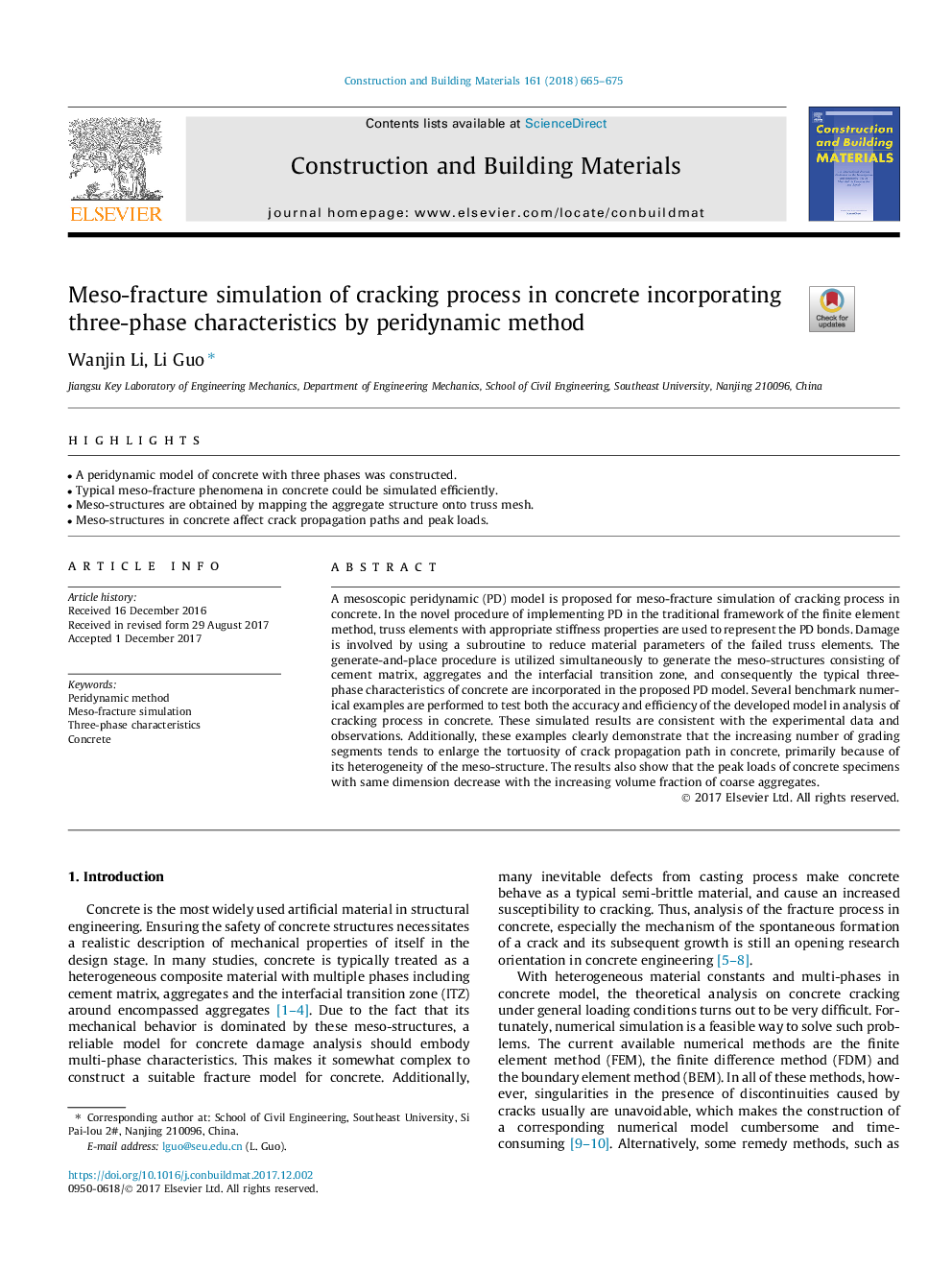| Article ID | Journal | Published Year | Pages | File Type |
|---|---|---|---|---|
| 6716902 | Construction and Building Materials | 2018 | 11 Pages |
Abstract
A mesoscopic peridynamic (PD) model is proposed for meso-fracture simulation of cracking process in concrete. In the novel procedure of implementing PD in the traditional framework of the finite element method, truss elements with appropriate stiffness properties are used to represent the PD bonds. Damage is involved by using a subroutine to reduce material parameters of the failed truss elements. The generate-and-place procedure is utilized simultaneously to generate the meso-structures consisting of cement matrix, aggregates and the interfacial transition zone, and consequently the typical three-phase characteristics of concrete are incorporated in the proposed PD model. Several benchmark numerical examples are performed to test both the accuracy and efficiency of the developed model in analysis of cracking process in concrete. These simulated results are consistent with the experimental data and observations. Additionally, these examples clearly demonstrate that the increasing number of grading segments tends to enlarge the tortuosity of crack propagation path in concrete, primarily because of its heterogeneity of the meso-structure. The results also show that the peak loads of concrete specimens with same dimension decrease with the increasing volume fraction of coarse aggregates.
Keywords
Related Topics
Physical Sciences and Engineering
Engineering
Civil and Structural Engineering
Authors
Wanjin Li, Li Guo,
